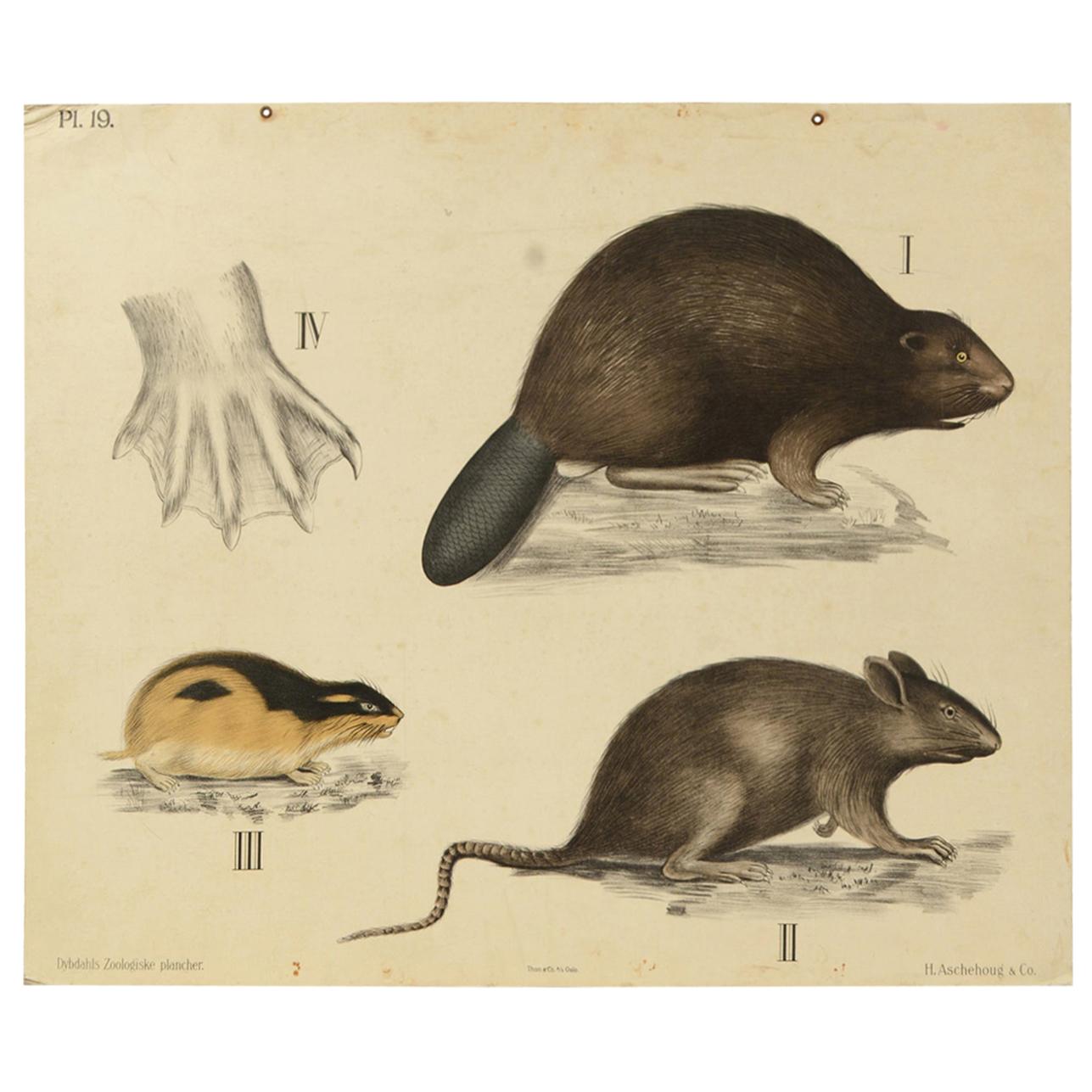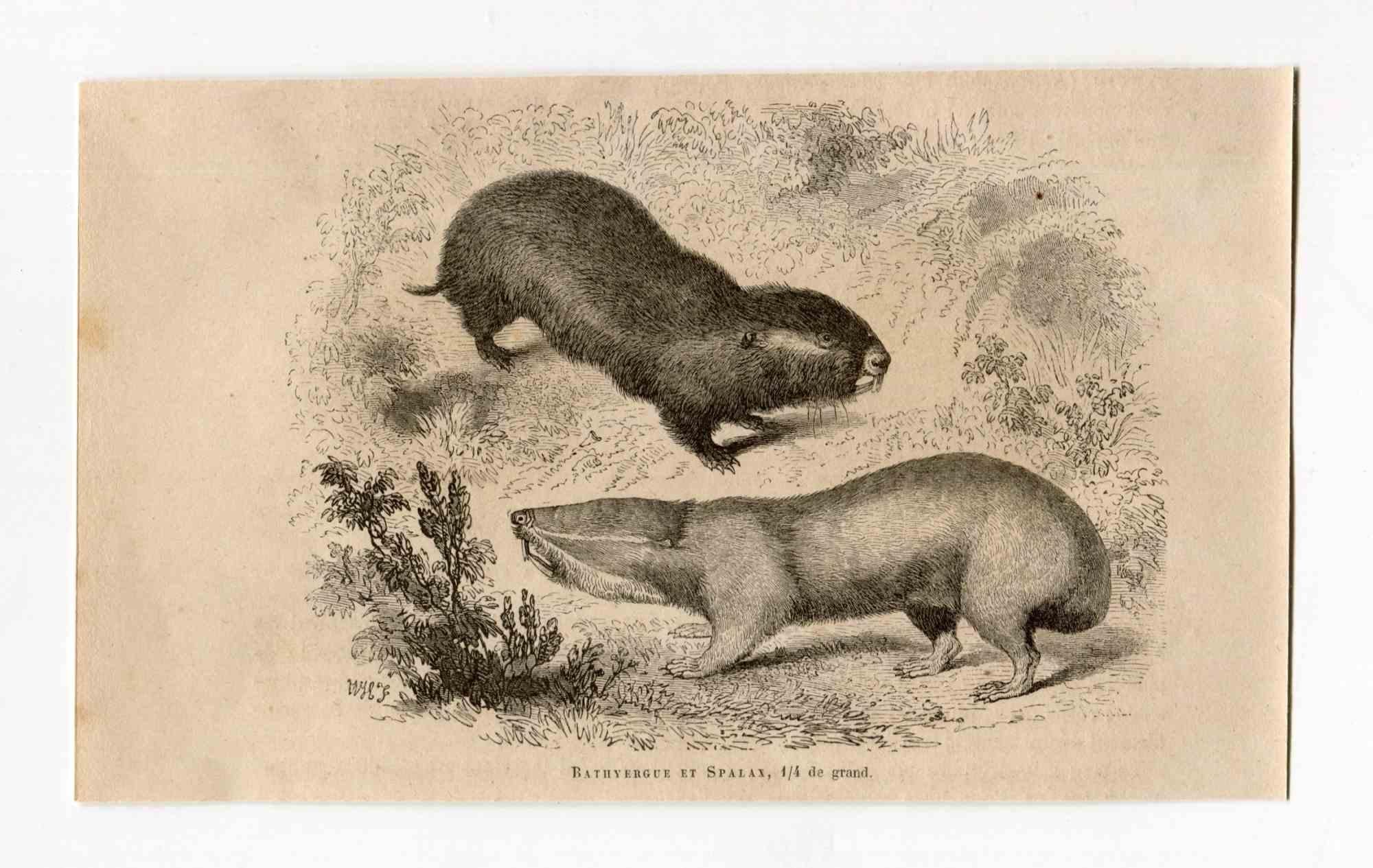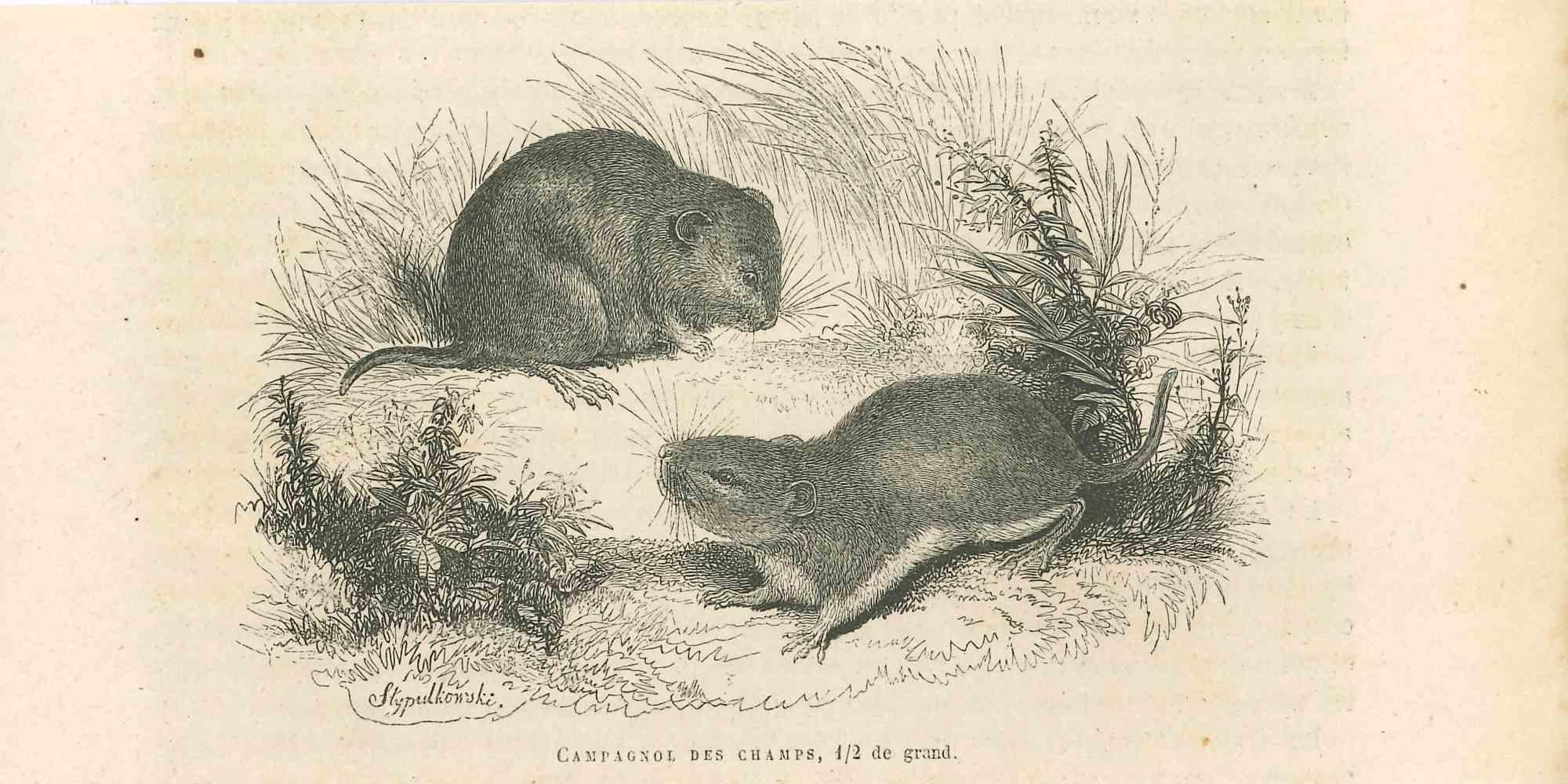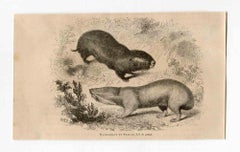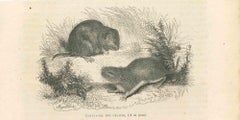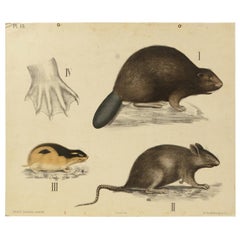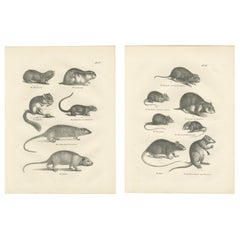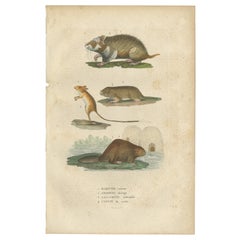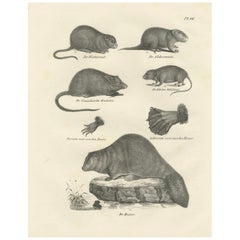Items Similar to Rodents- Original Lithograph - Late 19th Century
Want more images or videos?
Request additional images or videos from the seller
1 of 4
Édouard Traviès Rodents- Original Lithograph - Late 19th CenturyLate 19th Century
Late 19th Century
$238.72
£178.12
€200
CA$332.88
A$364.79
CHF 190.50
MX$4,383.82
NOK 2,381.62
SEK 2,246.24
DKK 1,522.63
About the Item
Image dimensions: 16,8 x 12 cm.
Rodents is an original color lithograph realized by Édouard Traviès in the late 19th century.
Original Title: L'agouti - Le glouton. Signed on plate: Édouard Traviès del.
Good conditions, except for minor signs of aging and usual yellowing of the paper.
The print is divided in two compositions representing different animals: the first lithograph portrays a little mouse and a rodent in a natural landscape, while the second composition illustrates a suggestive winterly landscape with a rodent perfectly at ease in the snow.
Édouard Traviès de Villers (1809-1876) was a French watercolourist, lithographer and illustrator; he was famous for his illustrations of natural history subjects, especially birds.
- Creator:Édouard Traviès (1809 - 1876)
- Creation Year:Late 19th Century
- Dimensions:Height: 8.86 in (22.5 cm)Width: 6.38 in (16.2 cm)Depth: 0.08 in (2 mm)
- Medium:
- Period:
- Condition:Insurance may be requested by customers as additional service, contact us for more information.
- Gallery Location:Roma, IT
- Reference Number:Seller: M-1069381stDibs: LU65036357922
About the Seller
4.9
Platinum Seller
Premium sellers with a 4.7+ rating and 24-hour response times
1stDibs seller since 2017
7,714 sales on 1stDibs
Typical response time: 2 hours
- ShippingRetrieving quote...Shipping from: Monaco, Monaco
- Return Policy
Authenticity Guarantee
In the unlikely event there’s an issue with an item’s authenticity, contact us within 1 year for a full refund. DetailsMoney-Back Guarantee
If your item is not as described, is damaged in transit, or does not arrive, contact us within 7 days for a full refund. Details24-Hour Cancellation
You have a 24-hour grace period in which to reconsider your purchase, with no questions asked.Vetted Professional Sellers
Our world-class sellers must adhere to strict standards for service and quality, maintaining the integrity of our listings.Price-Match Guarantee
If you find that a seller listed the same item for a lower price elsewhere, we’ll match it.Trusted Global Delivery
Our best-in-class carrier network provides specialized shipping options worldwide, including custom delivery.More From This Seller
View AllSmall Rodents - Original Lithograph - Late 19th Century
Located in Roma, IT
Small Rodents is a color lithograph realized by an anonymous artist in the late19th century.
Good conditions, except for usual signs of aging.
The artwork shows four small rodents,...
Category
Late 19th Century Animal Prints
Materials
Lithograph
Bathyergue - Lithograph by Paul Gervais - 1854
By Paul Gervais
Located in Roma, IT
Bathyergue is an original lithograph on ivory-colored paper, realized by Paul Gervais (1816-1879). The artwork is from The Series of "Les Trois Règnes de ...
Category
1850s Modern Animal Prints
Materials
Lithograph, Paper
Squirrels - Original Lithograph - Late 19th Century
Located in Roma, IT
Squirrels is a color lithograph realized by an anonymous artist in the late 19th century.
Good conditions. This print reproduces four squillers indicated with the alphabet letters...
Category
Late 19th Century Animal Prints
Materials
Lithograph
The Mouses - Lithograph by Paul Gervais - 1854
By Paul Gervais
Located in Roma, IT
The Mouses is an original lithograph on ivory-colored paper, realized by Paul Gervais (1816-1879). The artwork is from The Series of "Les Trois Règnes de la ...
Category
1850s Modern Animal Prints
Materials
Lithograph, Paper
Hunting Animals - Original Lithograph - Late 19th Century
Located in Roma, IT
Hunting Animals is a beautiful color lithograph realized by an anonymous artist in the late 19th century.
The print, preserved in excellent conditions, shows three animals - designa...
Category
Late 19th Century Animal Prints
Materials
Lithograph
Fouines - Lithograph by Paul Gervais - 1854
By Paul Gervais
Located in Roma, IT
Fouines is an original lithograph on ivory-colored paper, realized by Paul Gervais (1816-1879). The artwork is from The Series of "Les Trois Règnes de la ...
Category
1850s Modern Animal Prints
Materials
Lithograph, Paper
You May Also Like
Zoological Lithograph Rodents 1912 on Cardboard by H Aschehoug & Co, Norway
Located in Milan, IT
Zoological didactic plate n. 19 lithograph on cardboard made in 1912 depicting rodents. Dybdhals Zoologiske Plancher P.M.Bye & Co Oslo. Made by H Aschehoug & Co. Good condition. Meas...
Category
Vintage 1910s Norwegian Prints
Materials
Paper
19th-Century Engravings of Rodents and Small Mammals by Dutch Naturalists
Located in Langweer, NL
Title: Exquisite 19th-Century Engravings of Rodents and Small Mammals by Dutch Naturalists
Description:
This finely detailed engraving originates from a 19th-century zoological ...
Category
Antique 1830s Prints
Materials
Paper
$362 Sale Price / set
20% Off
Antique Engraving of Rodents: Hamster, Jerboa, Pocket Gopher, and Beaver - 1825
Located in Langweer, NL
Title: Antique Engraving of Rodents: Hamster, Jerboa, Pocket Gopher, and Beaver - 19th Century
Description:
This fascinating antique engraving depicts four distinct rodent species: ...
Category
Antique 1820s Prints
Materials
Paper
19th-Century Zoological Lithograph of Beavers, Muskrats and Field Mice
Located in Langweer, NL
Title: 19th-Century Zoological Lithograph of Beavers, Muskrats, and Field Mice
Description: This 19th-century lithograph presents a detailed scientific study of various rodents, ...
Category
Antique 1830s Prints
Materials
Paper
Rodents & Small Mammals Print: Beaver, Squirrel, Porcupine – Antique 1867
Located in Langweer, NL
Rodents & Small Mammals Print: Beaver, Squirrel, Porcupine – Antique 1867
This charming antique print depicts a wide variety of rodents and small mammals in detailed hand-coloured e...
Category
Antique 1860s German Prints
Materials
Paper
Moles, Shrews, and Burrowing Mammals from 'The Mammals' Natural History, 1836
Located in Langweer, NL
Moles, Shrews, and Burrowing Mammals from 'The Mammals' Natural History Lithographs
Here is a detailed description of the two lithographs, which focus on moles and related species. ...
Category
Antique 1830s Prints
Materials
Paper
More Ways To Browse
Edouard Travies
Kristjana Williams
La Chouette
Leroy Neiman Tiger
Minami Keiko
Paco Pomet
Pat Passlof
Radovan Kraguly
Rodrigue Blue Dog Remarqued
Rodrigue Equal Justice
Sidney Z Lucas
Stork Artist
Warhol Pussy
America Martin Cat And Bird
Andy Warhol Cow Wallpaper
Andy Warhol Sam
Audubon Bien Edition
Audubon Octavo 1st Edition
